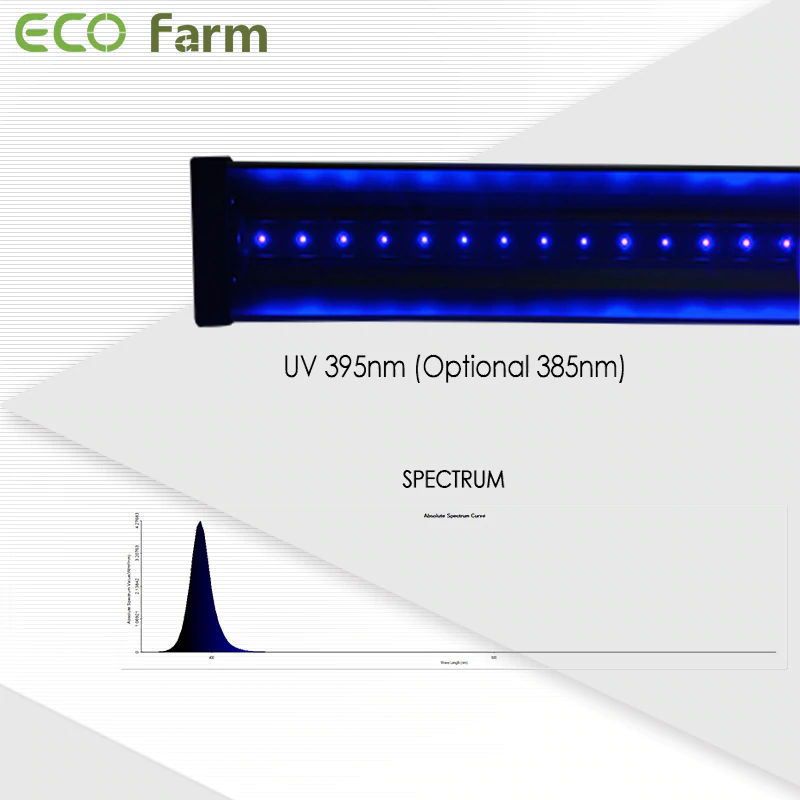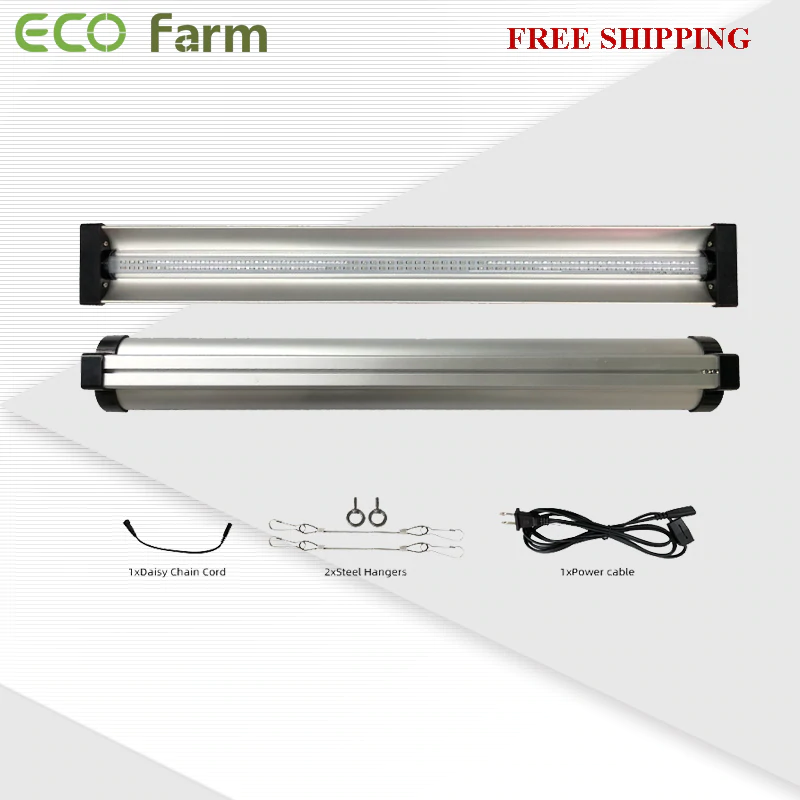How UV Light Affects Indoor Plants Growth (2022 Updated)
For some growers, it may seem counterintuitive that harmful radiation, such as UV light, can have a positive effect on plants.
But nature works in weird ways.
UV light can actually help you increase the yield and quality of your growth. So, adding a UV lamp to your lighting system can be very useful.
In this article, we’ll show you the best three UV grow lights for indoor plants.
Why Is UV Light Useful for Your Plants?
UV light is highly energetic, so it can cause damage to living tissues.
Around 3% of sunlight is UV light, so most plants are exposed to UV radiation in their natural habitats.
To shield themselves from the harmful effects of UV lights, plants will activate specific processes and produce certain molecules that have protective functions, such as repairing damage or absorbing UV light.
For indoor plant growers, these processes and molecules are useful in improving the quality and yield of plants.
UV light is a range of wavelengths stretching between 100 to 400 nm. This range is divided into smaller wavelength ranges (UVA, UVB, and UVC). In indoor gardening, UVA (315–400 nm) and UVB (280–315 nm) are mainly used.
There’s a lot of debate going on about whether UVA or UVB is better for plants.
UVA or UVB?
With a shorter wavelength, UVB light holds more energy than UVA light and some growers believe it’s more beneficial.
The effect of UVB light on plants has been well demonstrated in studies.
One study done on plants showed that treating the plant with UVB light resulted in around 30% increase in THC content.
Another study revealed that UVB can make plants more resistant to pests and diseases.
Above all, in some species and in small quantities, UVB light can boost photosynthetic activity.
That said, other studies show that UVA light has similar effects on plants.
For example, UVA light can boost the levels of nutrients and volatiles in different plant species.
The famous grow light brand, Black Dog, did some experiments to show that UVA light can also increase THC in plants.
Same as UVB light, UVA light can also boost photosynthesis and increase yield.
So, since UVA and UVB have similar benefits, why choose one instead of the other?
While UVB light can be slightly more beneficial, it can also have detrimental effects on plants and people.
That’s why today many UV-emitting grow lights put out UVA light instead of UVB light.
Mistakes done while using UVA light can be less dangerous than ones done using UVB. So, UVA light can be handled better by growers, especially starters, than UVB light.
It’s up to you to decide whether you want to use UVA or UVB light for your plants, but in all cases, you should know how to properly use the light.
ECO Farm ECOM 30W UV Supplemental Grow Light Bar

Features:
ECO Farm UV grow lights are one of the best UV grow lights on the market. The light is basically a 27" long LED strip containing 385nm and 395nm diodes. This UV supplement can cover 4' x 4' (1.2m x 1.2m) to 5' x 5' (1.5m x 1.5m). The device only consumes about 30 watts of power, so it won’t cost you a lot of energy. It’s also waterproof, so it’s perfect for wet growing conditions.
ECO Farm 30W UV & IR Supplemental Lighting Bar

Features:
The ECO Farm 30W LED Grow Bar has been designed and improved to maximize yield, space and versatility while minimizing cost. Excellent efficiency and light delivery potential, as well as long, low maintenance life provide long-term sustainability. This LED grow light bar includes ultraviolet (UV) as well as infrared (IR) and far red waves. These wavelengths don’t significantly affect photosynthetic rates, but they do affect plants, and in some very interesting ways. It’s important to note that UV and IR lights should generally be run independently of the main lights and in your garden for short periods of time.
ECO Farm 50W LED Grow Light Bar Strip IR/UV

Features:
This LED grow light bar adopts LM561C, LM301B LED, ultra-high PPFD. It has a high PPFD at 4x4 feet of coverage and 1549 umol/m2/s at 6 inches from the canopy. 380nmUV 730nm IR LED, suitable for all growth stages, especially flowering, high yield: >2g/W. Standard non-dimming, different PPFD dimming, Bluetooth wireless control system optional.
How Does UV Light Impact Plants?
Plants evolved for millions of years under natural lighting conditions, domesticated for several tens of thousands of years, and growing under artificial light conditions for only about a century. The natural responses plants developed are triggered by natural light and environmental conditions to which they are no longer exposed in modern growth operations. The net effect of these artificial conditions is a decline in quality and quantity.
Benefits of UV Light
Growers can mimic natural conditions using UV light to trick indoor domesticated plants into reacting as if they were still wild.
UV Light Reduces the Impact of Pests
Plants are not static. Plants take in information from their environment and react. For example, certain UV wavelengths trigger plants to release defensive compounds to repel pests and alert other plants that predators are nearby. The defensive compounds make the plant less desirable to pests but enhance the taste, color, and THC and CBD concentrations. Essentially, a grower can “trick” a plant into becoming more aromatic and flavorful by using UV light.
Some studies also indicate that a combination of UV-B and photosynthetically active radiation (PAR) can trigger greater concentrations of defense compounds — including in older plant leaves. These increased concentrations deter whitefly and thrips, which are particularly pernicious pests that favor older plants.
Increase THC content
When a person is exposed to UV light, they develop a tan that is a natural shield to UV exposure. Similarly, plants release their own version of natural sunscreen. Plants produces higher densities of trichomes that shield the plant from UV light and store THC and CBD. Therefore, the increased density of trichomes also increases THC and CBD density.
Speed up Germination Process
UV light also accelerates the germination process — i.e., when seeds take to the soil. Growers can prepare plants for high-intensity light by shifting seedlings to more intense light sources. UV exposure in the early stages of growth reduces shock time which speeds up the growth process.
Cons of UV Light
Cost
While incorporating UV lighting does result in long-term cost savings due to reduced nutrient costs, there is a high upfront cost. Growers may need to rewire their lighting system to accommodate the new UV lights. Further, UV lamps are expensive.
UV Light Linked to Lower CBD Concentrations
Some studies link increased UV exposure to reduced CBD concentrations. Researchers hypothesize the reduction is due to a tradeoff in resources — as THC levels increase, CBD levels decrease. However, the silver lining to these studies allows growers to experiment with different CBD and THC concentrations. Growers can grow plants for specific products for either THC or CBD benefits.
UV Grow Lights Empower Growers to Harness Nature
On balance, UV light allows growers to harness natural processes honed over millions of years of evolution, increasing the quality and quantity of their crops while saving money long-term and reducing the impact of synthetic fertilizers and nutrients.
Conclusion
UV lights can help you improve your growth and yield.
However, you need to know how to use them properly, or else you could damage your plants.
Always follow the recommendations by the manufacturer and do your own research before using UV grow lights.
评论
发表评论